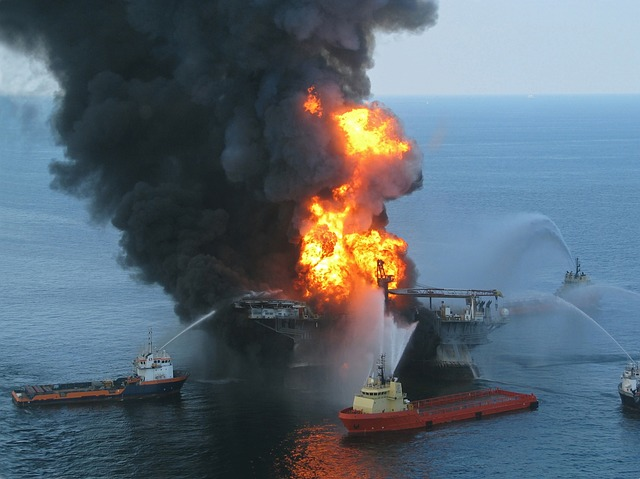On the night of April 20, 2010 at 9:30 p.m., BP executives that had flown in on a helicopter were celebrating the successes of the oil-drilling rig called Deepwater Horizon, standing on the rig’s main deck with some of the more senior-ranking workers. Ironically, they were also toasting to that fact that it had been over seven years since the last injury on the Horizon. Those that were not granted the few premium invites to the party were going about their normal routine: showering, sleeping, getting ready for bed, relaxing from a hard days’ work. In the next 30 minutes, the unthinkable happened -- by 10 p.m., the entire rig was engulfed in flames, and by April 22, it had completely disappeared under the sea.
This week marks the five-year anniversary of that horrific event. Eleven people lost their lives, and a handful more were severely injured. Over the course of the next few days, the oil that the rig was carrying was released into the surrounding ocean, and crude oil continued to leak from the underwater well. It’s estimated that more than 210,000 gallons of oil seeped into the environment every 24 hours, and just eight days later, the resulting oil slick covered 5,000 square miles. Over the course of the next few months, oil continued to leak from the pipes, and overall, the government estimated that around 5 million barrels of crude oil were spilled.
The results of the oil spill were devastating to the surrounding area. Birds were covered in the slick liquid, and as a result were unable to retain their buoyancy and regulate their body temperature. Other animals in the area, such as dolphins, fish, and sea turtles, were likely to ingest the oil, causing internal bleeding and painful ulcers. Reefs in the area were completely destroyed, causing the ecosystem that depended on them to completely collapse. It’s estimated that more than 400 species of mammals, fish, and coral were affected by the spill.
Billions of dollars were invested in the cleanup, which involved several attempts to plug the hole releasing the gas, in addition to trying to get rid of the oil that had already escaped and was damaging the surrounding area. And five years later, we’re still dealing with the consequences, and we’re not even done uncovering the full extent of the damage. Realistically, it will take generations for the effects of the spill to be completely eradicated. Balls of tar still surface on the beach, driving down tourism and resulting in decreasing economy for many of the states along the Gulf. The land itself is even beginning to disappear – oil has continued to cover the roots of mangrove trees in the area, which keep many of the islands that dot the coastlines together, killing the trees and causing the land to disintegrate into the ocean.
In 2015, ecosystems and the wildlife that depend on them continue to suffer as a result of the Deepwater Horizon disaster. Many communities and people that depended on these animals and ecosystems, such as the oyster farmers and fishermen, are still reeling as a result. Dead dolphins continue to wash up on the beach, showing signs of poisoning; fish in the region are found belly-up, with oil coating their gills; mollusks and oysters die off as the reefs they live on disappear. It’s a chain reaction that unfortunately shows no sign of stopping.
When remembering the horrific event that happened five years ago this week, it’s important to also note that what happened in 2010 is not completely in the past. We’re still dealing with the devastating effects, and the wildlife in the area continues to suffer. And believe it or not, there are new drilling plans in the works, like those being pushed by Shell Oil right now in the Arctic. These plans come with a high risk of an oil disaster -- a 75-percent chance in the Arctic -- not to mention the 100-percent chance of worsening our climate crisis.
The risks are well documented. We've seen time and again that drilling equals spilling, and spills leave lasting effects on communities along our coasts. It’s time to stop dangerous drilling and invest more in clean energy alternatives like wind and solar.
